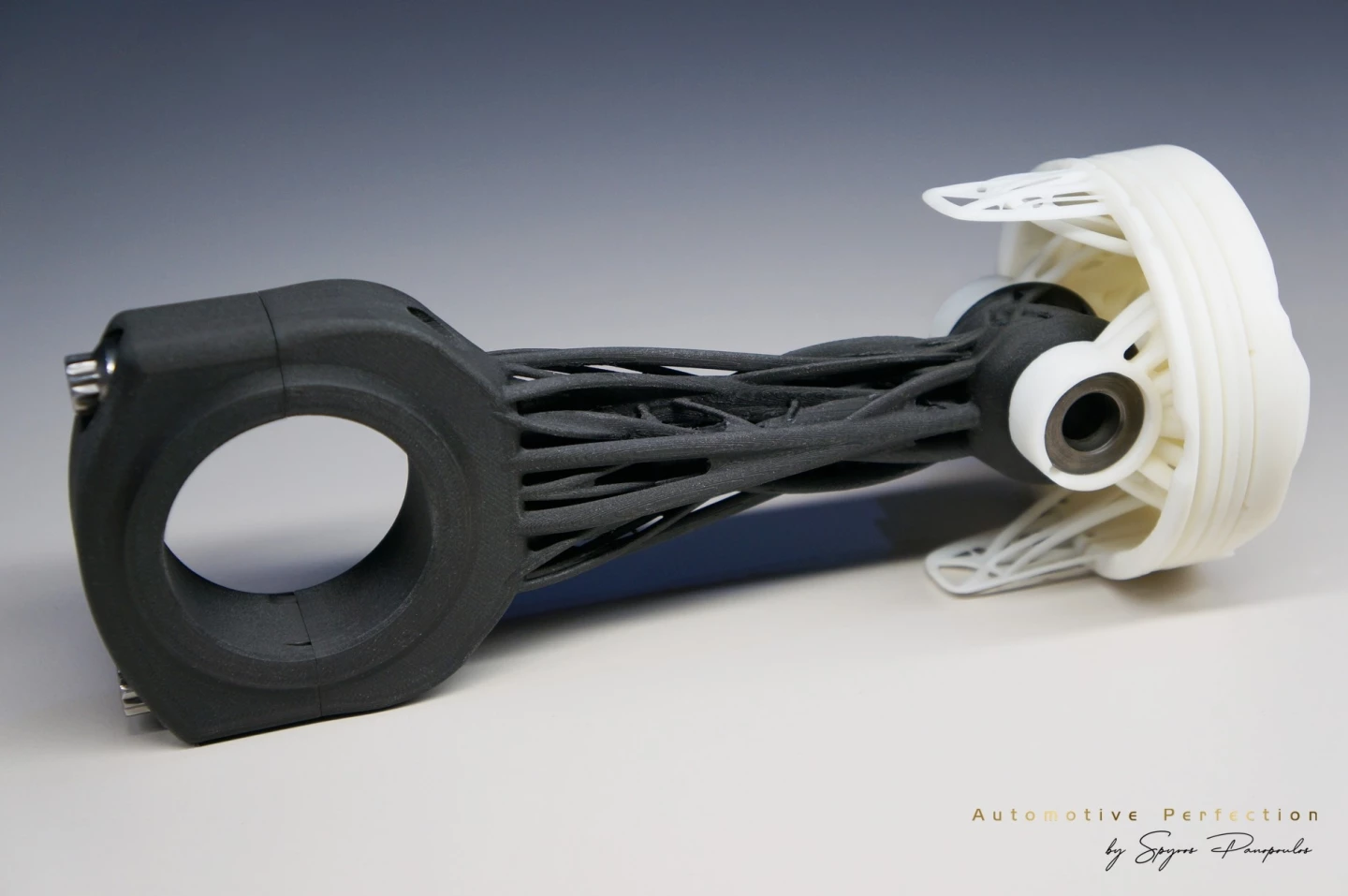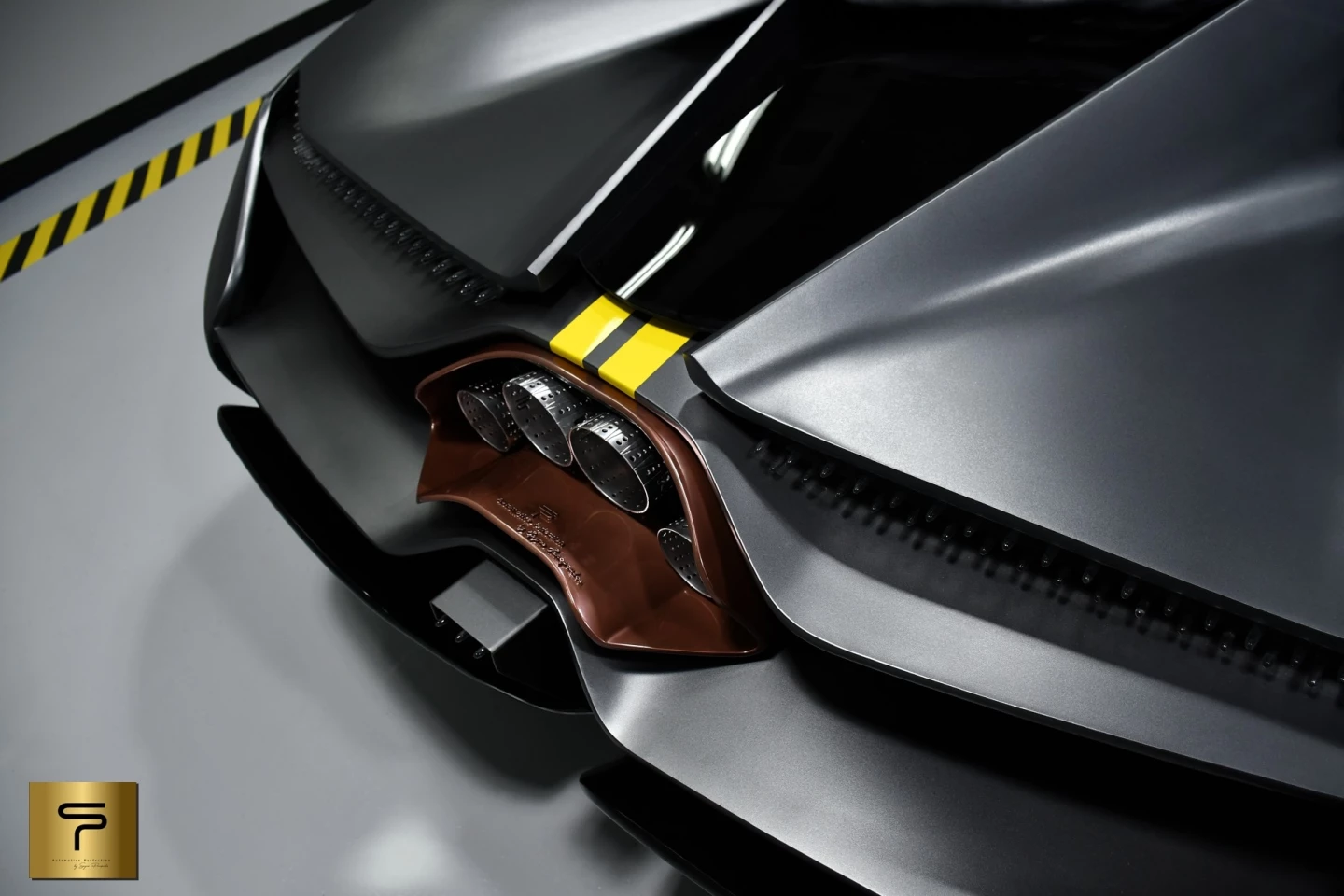Extreme hypercars have come at us thick and fast in the last couple of years, but none more extreme than this. Greek drag racing tuner Spyros Panopoulos – and surely there can be no more Greek a name than that – is preparing to launch a combustion car so ludicrously overpowered that he feels it belongs in a whole new category above hypercars and megacars: the lone ultracar.
Named "Project Chaos," and with good reason, it will come in two versions. Both use a 4-liter V10 engine, designed and milled out of billet aluminum in-house, featuring 20 injectors, 40 valves, titanium camshafts, titanium/inconel valves and massive twin turbochargers made from carbon and titanium, with ceramic compound turbine wheels.
One will use pistons and rods 3D printed out of titanium, revving to a stratospheric 11,000 rpm and delivering 2,000 horsepower, which would instantly propel it to equal-first place on our list of the world's most powerful production cars alongside the ludicrous Lotus Evija. But where the Evija's 2,000 horses are produced electrically and sent to the wheels via a single-speed transmission, the Chaos will get the job done with a much more complex combustion system and give you a dual-clutch gearbox with eight different ratios to play with. Terrifying stuff.

The second version will take things into unexplored reaches of the stratosphere, revving to 12,000 rpm, making it the second highest-revving production engine ever, just 100 rpm behind the monster of a thing Cosworth is building for the new Gordon Murray T.50.
This one will have conrods shaped in carbon fiber, and pistons 3D printed in a ceramic compound previously used as exterior tiling on space shuttles due to its extraordinary strength, light weight, hardness, and almost total resistance to thermal expansion.
This version will top out at no less than 3,000 horsepower, leapfrogging the most powerful cars ever produced by a cool 50-percent margin. We cast an eye down the spec sheet to see exactly which company's tires are expected to cope with three thousand ponies through an 8-speed box, but none has been nominated. We imagine Pirelli and Michelin executives are doing their best to hide from Spyros and his modest nine-man team when they call.

Panopoulos has considerable form when it comes to monster performance – he and his team have been making extreme racing conrods, titanium valves, beryllium valve seats, turbo compressor wheels, engine blocks, flywheels, and complete engines as far back as 1997.
By 2008, he'd dyno-tested a 1.8-liter Mitsubishi Evolution engine at 2,145 hp and 12,800 rpm, and by 2017 he had that 4WD Evo up to 2,880 hp and 14,100 rpm, a world record for horsepower per liter. That car ran a record 7.9 seconds on the quarter mile in Abu Dhabi last year – despite a rumored timing chain break a little over halfway down the track that stopped the car achieving the six-second time it was aiming for.

In the racing world, he's worked with MotoGP, WRC, BTCC, Hill Climb, Dragster and Rally Cross teams, as well as developing electronics and control systems for Formula One teams. This is the CV of a man that gets things done on an absolutely epic level.
In more recent years, he's been getting seriously into next-level materials, additive manufacture, and what appears to be his own proprietary brand of generative, or evolutionary design. We've reached out to the company for more information on what it calls the "anadiaplasi" process, in which a component "forms its own form according to the forces exerted on it."
Generative design, as we've explored before, is a process in which a component's fixed points, stress loadings, materials and desired performance characteristics are placed into a CAD model, and then sent to a cloud processing service where they are randomly mutated over thousands, or even millions of generations in a process designed to emulate natural selection.
The better-performing designs are allowed to multiply and evolve while the worse ones die off, and eventually, complex but effective shapes emerge that could never have been designed by hand. They typically offer extreme strength, incredible lightweighting, and minimal use of materials in a manufacturing process that can only be achieved with 3D printing due to their strange, organic-looking forms.

Panopoulos's anadiaplasi-generated components – which include everything from those extraordinary pistons and conrods to entire wheels and brake calipers – have a similarly skeletal, organic look to them, but feature some interesting twisting tendril shapes we haven't seen before, so we're very interested in learning more about how it's done.
The brake calipers alone look like something out of a Venom comic, a frankly sinister series of thin, vine-like forms wrapping around the disc and supporting the piston chambers. Forget your chunky monoblocs, this is next-level stuff, and it looks like you could easily lift them with your little finger.
It's this kind of extreme lightweighting (the team is aiming for a total car less than 1,150 kg, or 2,535 lb), that Panopoulos believes may allow him to offer the first production car making more than two horsepower for every kilogram of its weight, a power-to-weight ratio he believes will result in acceleration forces up to 3 g where conditions and adhesion allow. That's well in excess of Formula One, or indeed anything outside the pointy end of the drag racing world.
In an interview with Greek media, Panopoulos states the car will be aerodynamically ready for speeds above 500 km/h (310 mph), putting it in contention for the title of world's fastest car, and "theoretically" the acceleration should take you to 100 km/h (62 mph) in less than 2 seconds, and up to 400 km/h (248 mph) in around 7 seconds, if you can get your head around that idea.

We've only been able to see little glimpses of the car's final form; Panopoulos wants to launch it properly at the 2021 Geneva Motor Show. What we can see, though, looks pretty damn out there with its intricate LED brake light arrays, 3D-printed titanium exhausts and carbon bodywork reaching back from the roof to form a pair of folded wing-like shapes reminiscent of the back end of the Pininfarina Battista.
One other thing we do know, though, is that Project Chaos will rock a monocoque chassis made from Zylon, a thermoset liquid-crystalline polyoxazole material 1.6 times stronger than Kevlar that has been used in bulletproof body armor, anti-penetration cockpit protection for Formula One, racing yachts, SpaceX parachutes, tennis racquets, snowboards and bits of some of NASA's Martian rover vehicles. Ten times more expensive than carbon fiber, this is another interesting choice we're hoping we can discuss with Panopoulos or his team.
Project Chaos will doubtless be yet another squillion-dollar plaything for the uber-rich. We'll be lucky if we ever see one unleashed in anger and pushed to even a small percentage of its potential. But it's one of the most technologically progressive machines we've ever seen – with a full combustion engine, no less – and we're waiting with bated breath on a full reveal or the opportunity to learn more. Wild stuff, we'll take two in black thanks.
Source: Spyros Panopoulos Automotive
















